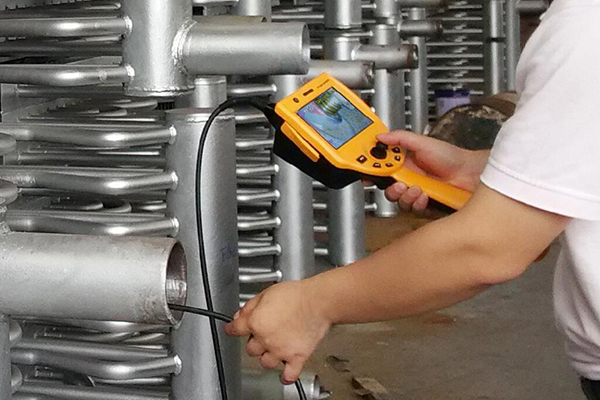
In the world of automotive diagnostics and maintenance, precision tools make the difference between guesswork and accurate repair. One such tool that has revolutionized modern engine inspections is the engine videoscope. This device allows mechanics, engineers, and technicians to look inside an engine without the need for costly or time-consuming disassembly.
Whether you’re working in an automotive repair shop, maintaining heavy machinery, or servicing aircraft engines, an engine videoscope offers unmatched efficiency and accuracy.
What is an Engine Videoscope?
An engine videoscope is a type of inspection camera designed specifically for examining internal engine components. It consists of a flexible probe with a miniature camera and LED lights at the tip, connected to a display screen that shows live video.
Unlike traditional borescopes, the engine videoscope provides digital imaging, recording, and high-definition visuals, making inspections clearer and more reliable.
Main Features:
High-resolution camera for detailed images
Flexible probe to navigate engine pathways
LED illumination for dark, confined spaces
Recording capabilities for documentation
Portable design for workshop and field use
Why Use an Engine Videoscope?
1. Non-invasive Inspections
No need to disassemble the entire engine just to check for cracks, leaks, or wear. A videoscope provides instant internal access.
2. Time and Cost Savings
Quick inspections reduce downtime and labor costs.
3. Improved Accuracy
High-resolution video allows mechanics to pinpoint issues such as cylinder wall scratches, valve deposits, or piston damage.
4. Record and Report
Videos and images can be saved for customer reports, training, or warranty claims.
Applications of Engine Videoscopes
Automotive Industry
Inspecting cylinder heads and valve chambers
Detecting carbon buildup in combustion chambers
Checking pistons, turbochargers, and injectors
Diagnosing engine block damage
Aerospace Industry
Inspecting aircraft engines and turbines
Ensuring compliance with strict safety regulations
Detecting micro-cracks in critical engine parts
Heavy Machinery and Marine Engines
Maintaining construction vehicles, ships, and generators
Checking for wear, corrosion, or leaks
Education and Research
Used in automotive engineering programs for training
Helps students understand real-world engine conditions
Benefits of Engine Videoscope
Precision: Detects even the smallest defects.
Versatility: Works with cars, trucks, aircraft, and industrial engines.
Portability: Lightweight and easy to use anywhere.
Documentation: Stores digital records for future reference.
Durability: Industrial-grade designs withstand harsh conditions.
Types of Engine Videoscopes
Rigid Engine Videoscopes
Strong and durable
Ideal for straight-path inspections
Flexible Engine Videoscopes
Can bend and navigate complex engine passages
Most commonly used in automotive workshops
Wireless/Wi-Fi Videoscopes
Connect to smartphones or tablets
Convenient for mobile mechanics
Industrial-Grade Videoscopes
Advanced optics, long probe lengths, and durability
Used in aerospace and heavy machinery maintenance
How to Choose the Right Engine Videoscope
When selecting an engine videoscope, consider:
Camera resolution (HD or 4K for better clarity)
Probe diameter and length (smaller probes for tighter spaces)
Lighting control (adjustable LEDs for dark areas)
Recording/storage capacity (SD engine Videoscope card, USB, or wireless storage)
Battery life (for extended inspections)
Durability (oil-resistant and waterproof materials)
Engine Videoscope vs. Traditional Borescope
Borescope: Optical lens with limited clarity, no video recording.
Videoscope: Digital, high-resolution video with recording options.
Advantage: The videoscope allows accurate diagnostics, better visibility, and improved documentation.
Future of Engine Videoscope Technology
The technology is advancing rapidly, bringing:
AI-powered defect detection for instant analysis
5G-enabled streaming for remote collaboration
Micro-sized probes for ultra-compact inspections
Augmented reality (AR) overlays for guided repairs
Maintenance Tips for Engine Videoscope
Always clean the probe after inspections.
Avoid bending the probe beyond its limit.
Store in a protective case.
Keep batteries fully charged.
Update firmware/software for advanced features.
Conclusion
The engine videoscope has become a critical tool in modern automotive, aerospace, and industrial maintenance. Its ability to provide clear, real-time visuals of engine internals without dismantling has transformed inspection practices.
By saving time, reducing costs, and enhancing diagnostic accuracy, the engine videoscope is more than just a tool—it’s an investment in efficiency, safety, and reliability.
For professionals working with engines, adopting an engine videoscope is no longer optional—it’s essential.